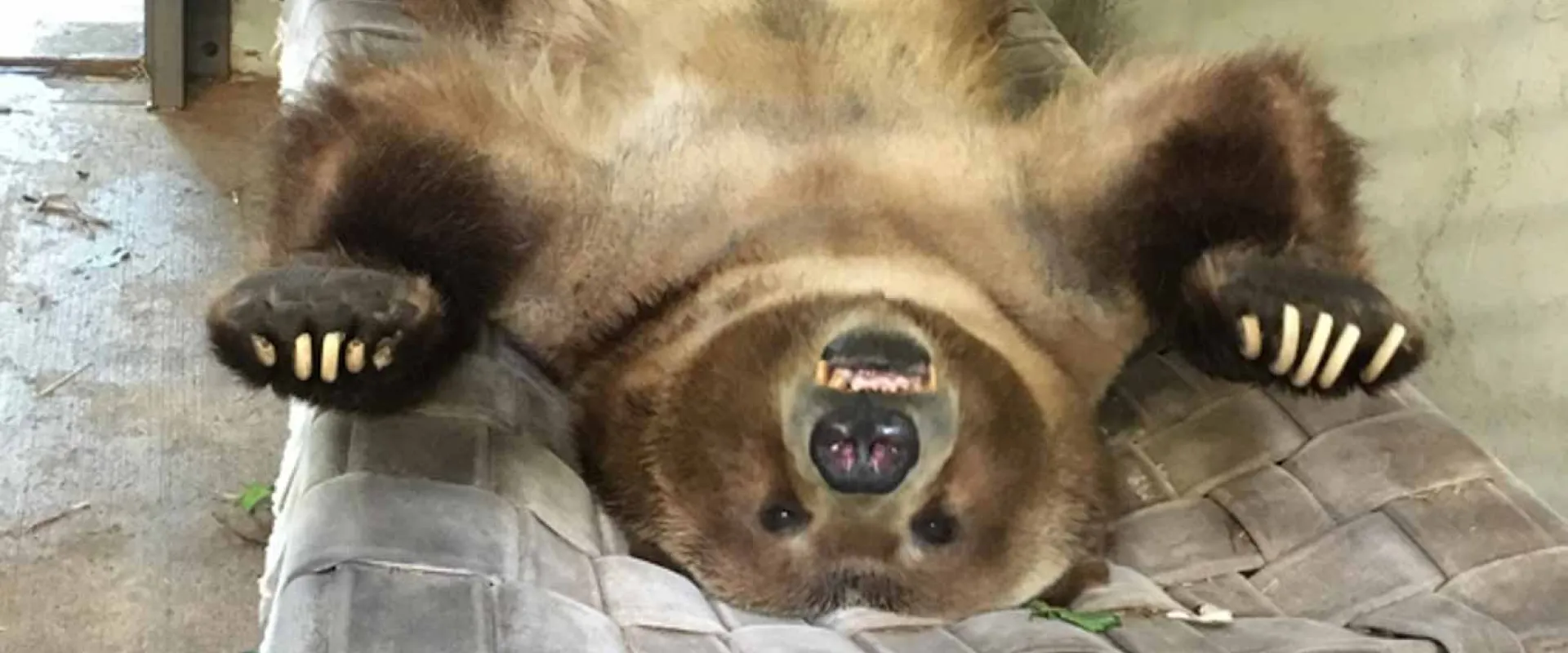Asheboro, July 09, 2021 - The North Carolina Zoo is grieving the loss of Tommo, a beloved grizzly bear who lived at the Zoo for 26 years. The 31-year-old bear's quality of life quickly declined to the point that the Zoo's staff made the difficult decision to euthanize him this week.
Tommo arrived at the Zoo in 1995 after being identified as a "nuisance bear" in Yellowstone National Park and relocated twice by the Montana Fish Wildlife and Parks. Nuisance bears have lost their fear of humans because they start to associate people as suppliers of food. This happens when people don’t properly secure their food while out in the wilderness.
Though bears like Tommo usually end up being euthanized because they pose a threat to humans, the Zoo was able to provide him a home that allowed him to live a long and healthy life.
"I had the privilege to work with Tommo for over 26 years," said Chris Lasher, an Animal Management Supervisor at the Zoo who was here when Tommo arrived in 1995. "He was an amazing, goofy and handsome bear. He never stopped surprising his caretakers with his intelligence and his ability to learn."
Lasher added Tommo, which means "winter" in the Native American Paiute language, loved to interact with his enrichment devices and search his habitat for treats. "Tommo also loved his pool and the waterfall and would spend hours just soaking in the water regardless of the outside temperatures," he said. "Tommo impacted so many people over his years at the Zoo, including zoo staff fortunate to work with him and the millions of guests that got to see him. Tommo will be missed."
Dr. Jb Minter, the Zoo's Director of Animal Health, said Tommo's health had been declining over the past week. "Due to his advanced age and the unknown causes of the severe clinical signs being noted, the animal care and veterinary team made the difficult decision to humanely euthanize Tommo," Minter said. "A necropsy (animal autopsy) was performed, and along with severe intervertebral disc disease, he also had a tumor on his adrenal gland, which could have been the cause of some of the intermittent clinical signs that the animal care team had been noticing."
The year Tommo arrived, the Zoo had been caring for another nuisance bear, Yepani. Yepani, 28, died of natural causes in 2019 after living at the Zoo since 1994.
“Tommo was such a great ambassador for grizzlies in the wild. His story highlights the continuing issues of bear-human conflict and our need to find ways to help, said Pat Simmons, the Zoo's CEO and Director. "Hopefully, his story inspires people to protect and respect the wilderness. It was our honor to know him and fortunate for us all that the Zoo could provide a home for Tommo to live out his years."
With the loss of Tommo, the grizzly bear habitat at the Zoo will remain empty for now. The Zoo will work with the Association of Zoos and Aquariums, U.S. Fish and Wildlife Services, and the Montana Fish, Wildlife, and Parks to offer a home for any orphaned or nuisance bears in the future.
Male grizzlies in the wild live about 22 years and weigh 400-700 pounds (Tommo weighed 700 pounds). They can also reach speeds of 30 mph for short distances.
Once prevalent throughout western North America, there are currently about 55,000 wild grizzly bears in North America, most of which live in Alaska. Approximately 1,500 grizzlies inhabit the lower 48 states of the U.S.
###
About the North Carolina Zoo
At the North Carolina Zoo, we celebrate nature. As the world's largest natural habitat Zoo, we inspire a lifelong curiosity about animals for the hundreds of thousands of people who visit our Zoo each year. Our dedicated team of experts provides exceptional, compassionate care for the more than 1,800 animals and 52,000 plants that call our Park home. We also lead efforts locally and globally to protect wildlife and wild places because we believe nature's diversity is critical for our collective future. The North Carolina Zoo invites all of our guests to witness the majesty of the wild in the heart of North Carolina and welcomes everyone to join in our mission to protect nature's diversity. Visit NCZoo.org to begin your life-changing journey.
About the N.C. Department of Natural and Cultural Resources
The N.C. Department of Natural and Cultural Resources (NCDNCR) is the state agency with a vision to be the leader in using the state's natural and cultural resources to build the social, cultural, educational and economic future of North Carolina. NCDNCR's mission is to improve the quality of life in our state by creating opportunities to experience excellence in the arts, history, libraries and nature in North Carolina by stimulating learning, inspiring creativity, preserving the state's history, conserving the state's natural heritage, encouraging recreation and cultural tourism, and promoting economic development.
NCDNCR includes 27 historic sites, seven history museums, two art museums, two science museums, three aquariums and Jennette's Pier, 39 state parks and recreation areas, the North Carolina Zoo, the nation's first state-supported Symphony Orchestra, the State Library, the State Archives, the N.C. Arts Council, State Preservation Office and the Office of State Archaeology, along with the Division of Land and Water Stewardship. For more information, please call 919- 807-7300 or visit www.ncdcr.gov.
